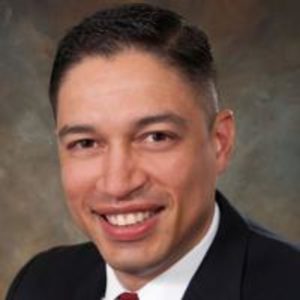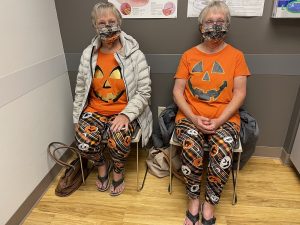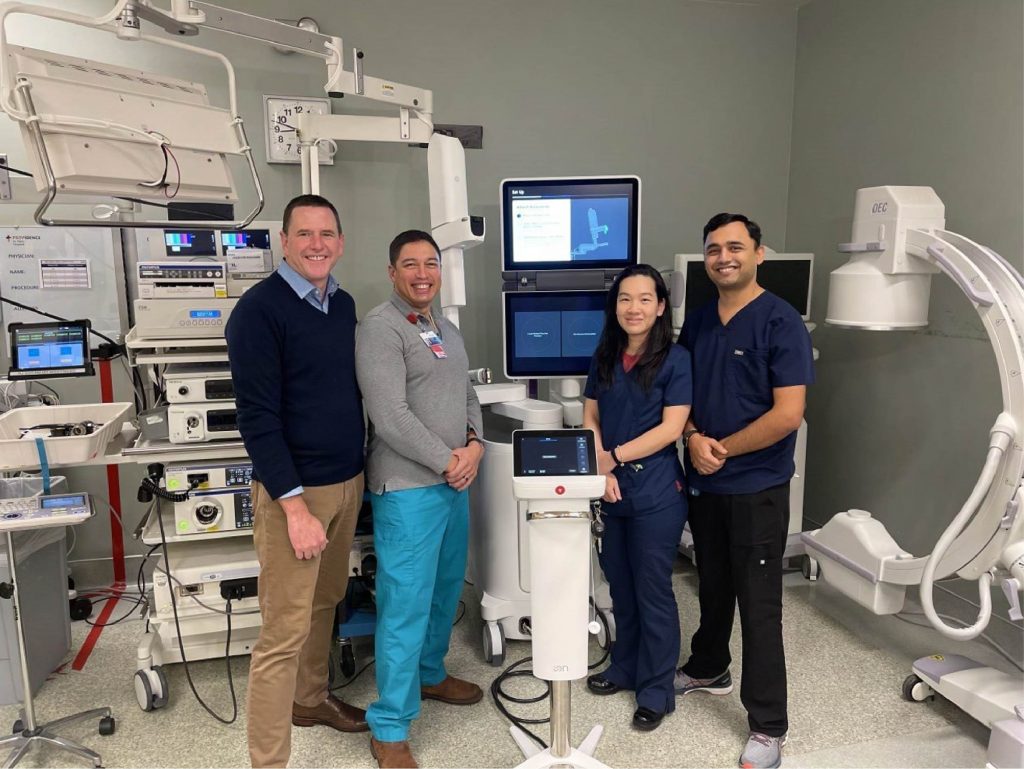Submitted by Providence
Hoodsport’s Jean Pescar, 80, was feeling great at her last routine doctor’s appointment in October. She did, however, remember to mention one thing. When she broke her knee back in 2015, her doctor detected on the CT scan a small nodule on her lung. They monitored it for growth, but when Jean changed doctors a few years later, she forgot about it for a while.

Jean’s new doctor ordered a new CT and – sure enough – the nodule had grown. He made a quick referral to get Jean in to see Dr. Dominique Pepper, a pulmonologist practicing at Providence South Sound Pulmonary and Sleep Medicine in Olympia. Jean’s twin sister Joan was also Pepper’s patient.
“Dr. Pepper had good and bad news,” Jean says. “The bad: My nodule was cancerous. The good: We found it very early.”
The Ion: Earlier and Better
As much a cancer diagnosis can ever be, Jean’s was well-timed. Providence St. Peter Hospital had just launched a new program dedicated specifically to the early detection and quick, streamlined treatment of lung cancer. Leading-edge technology – the Ion robotic-assisted bronchoscopy platform – and a new lung nodule clinic now give local patients a big advantage when they need this type of treatment.
The Ion system allows doctors to get a minimally invasive biopsy in the lung. It’s designed to allow physicians to collect lung tissue samples safely, even when the nodules are very small and located in difficult-to-reach areas or next to critical structures that could make access dangerous. It can also target very small nodules.

“In the past, when we found small lung nodules, we had to wait for them to grow before we could sample them,” Pepper says. “This would cause a lot of anxiety for the patient, while we just watched and waited.”
The Ion system is different. Not only can doctors target nodules as small as about 10 mm – compared to about 20 mm using older technology – the Ion robot can both biopsy the nodule and then use bronchoscopy to stage the tumor, if there is one, all during the same procedure. A pathologist is in the room to examine the biopsy in real time to determine if the sample is “suspicious,” so treatment can commence accordingly.
Truly a Game Changer
Having the Ion is a great boost to lung cancer care in our community, but it’s only one part of the program.

Providence pulmonologists have also launched a weekly lung nodule clinic on Tuesdays. This means the physicians can see patients within a week after the initial CT scan to get the ball rolling on their diagnostic biopsy with the Ion. In Jean’s case, she was in the clinic and had her diagnostic biopsy within the week. The same week of her biopsy results, she had an appointment with her surgeon, Nels D. Carroll, M.D. She had surgery – a lung resection of her right lower lobe that removed the cancerous tumor – just 18 days after her Ion procedure, after she passed her breathing and walking tests to check her suitability for surgery.
Pepper says that in the past, this entire process could take up to three months. But with the Ion technology and the lung nodule clinic, that brings all the needed physicians and clinicians together to focus solely on patients who have cancerous nodules. The team can now offer better, faster, more-effective care than ever before.
“Speed really matters in lung cancer treatment,” Pepper says. “We can now get patients who need it into surgery sooner, and I believe we will now be able to cure more cancers. This truly is a game changer.”
Back on the Road to Health
Jean’s feeling better every day as she continues to recover from surgery. “I’m so thankful for the great teamwork. My primary doctor, who was proactive in checking and staying involved through the process, and Dr. Pepper and Dr. Carroll, for getting me in and getting it done. I’m glad I remembered to have it checked. I wasn’t feeling bad before, but I had cancer! And now I’m back on the road to health.”

The pulmonology group is excited to have four pulmonologists trained in performing Ion robotic-assisted bronchoscopies. Pictured left to right: Dr. Richard Redman, Dr. Dominique Pepper, Dr. Warang Wongba and Dr. Suchit Khanijao. Photo courtesy: Providence
Sponsored


















































